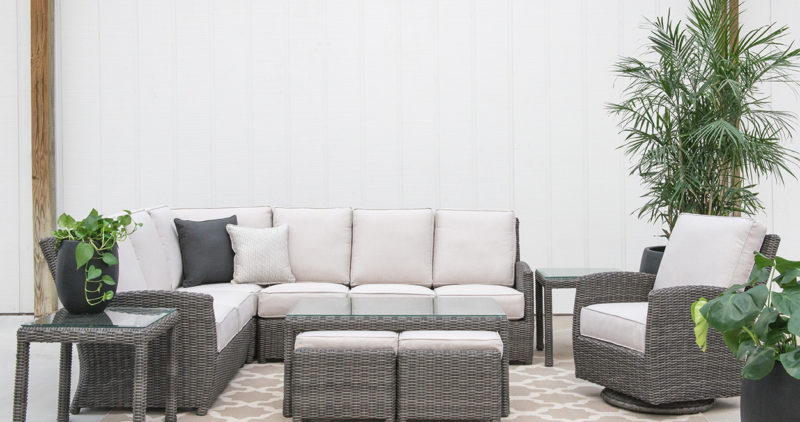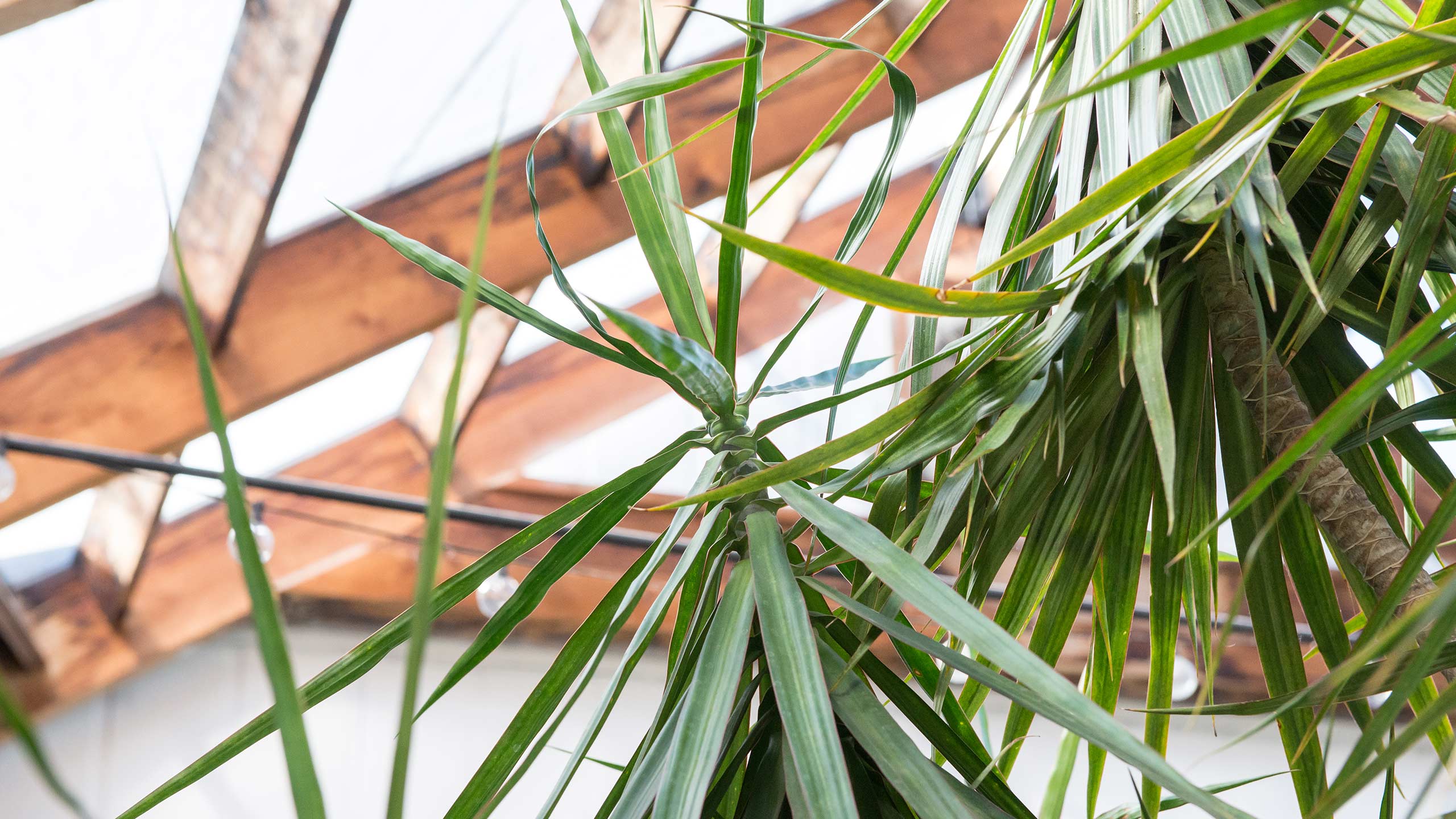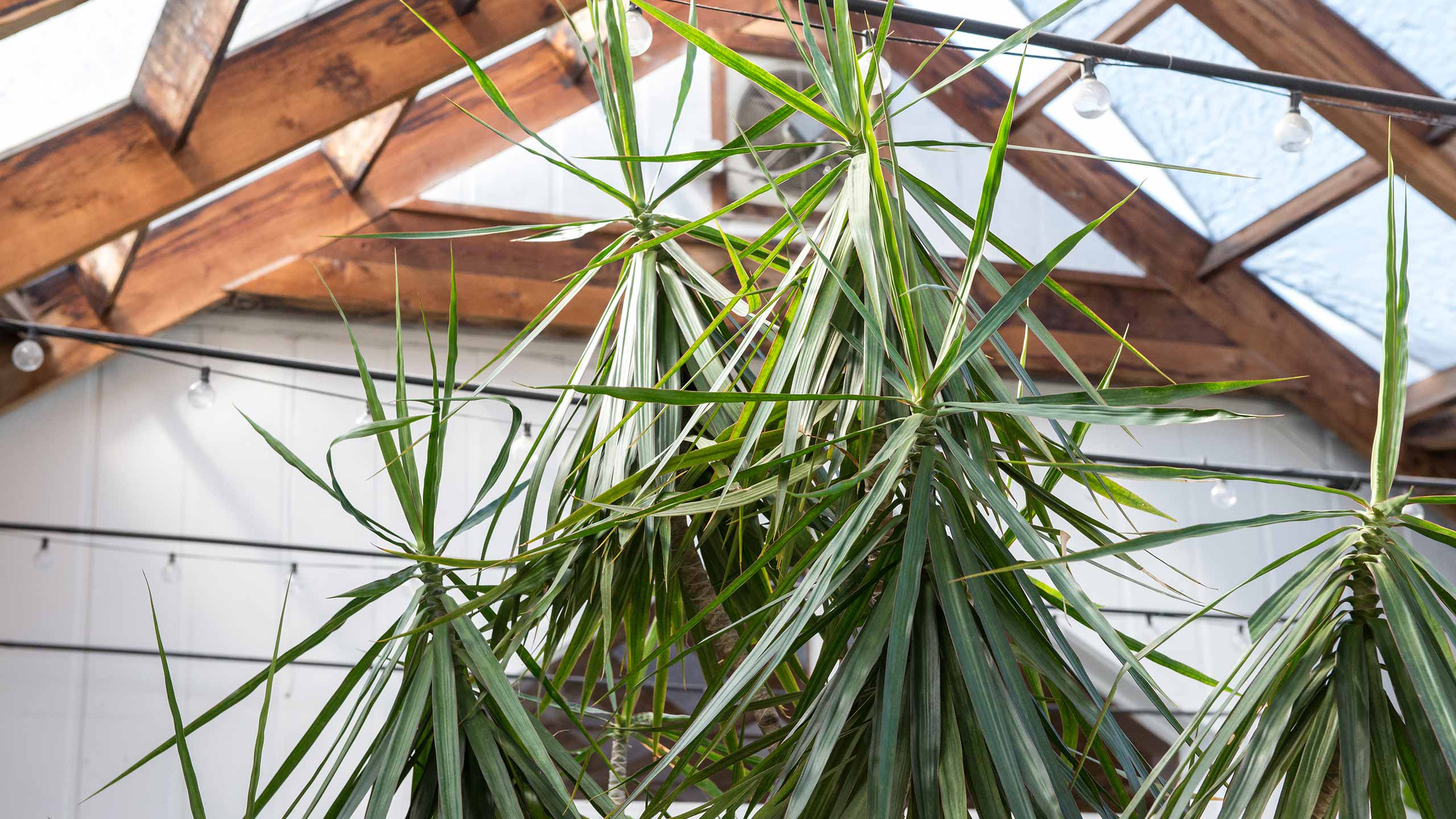
What makes a great houseplant? Is it something about the foliage – its color or shape? Maybe it’s versatility – the plant’s availability in a variety of heights and sizes to fill different spaces and functions in the home. For new plant parents or over-scheduled families, maybe a great plant must be amiable to a little neglect now and then. Or maybe a great plant is one with character – a plant that will set off on its own path and create its own identity if given the chance. We know a plant that fits all these criteria – Dracaena marginata. Easy-going but full of personality, the popular Dracaena marginata is truly one of the greats – for these reasons and more.

It’s Got Form + It’s Got Function
If you spend a little time online with plant-discussion groups, eventually you’ll run across a picture of a Dracaena marginata with the question, “What kind of palm is this?” The confusion is understandable. D. marginata grows on single slender stems – called ‘canes’ – each topped with a full tuft of narrow, sword-shaped leaves. The tuft of foliage is called the ‘head.’ Young dracaenas start out on very short canes – looking just like a thick clump of grass. But as they mature, the canes lengthen, the lower leaves drop away naturally, and the plants become very palm-like in appearance. This evolution – from short and grass-like to tall and palm-like – gives D. marginata its versatility in the home. Younger plants are perfect for tabletops or desks. Taller dracaenas can fill a lonely corner. Very often, plant growers will group several single dracaena canes into one pot – at staggered heights – so the foliage heads fill the visual space all the way from the pot to the top of the tallest cane. Grouped this way, dracaena makes a great floor plant sitting next to a desk, by a sofa, or at an entryway too.
To add to its variety of forms and functions, D. marginata comes in a choice of foliage colors too. The classic color is dark green with thin red margins running the length of each leaf. D. marginata ‘Tricolor’ is brighter green with red and cream margins. And in ‘Colorama,’ the green is almost entirely replaced with crimson stripes.

It’s Forgiving
Dracaena marginata doesn’t ask for much. Well-draining soil and a place in bright, indirect light is about all it wants. It doesn’t even need regular fertilizer if you repot with new soil every couple of years. Sometimes this dracaena is touted for its ability to tolerate low light too – and it will – but tolerating is different than thriving. Under low light, your dracaena may grow slowly and produce weaker, sparser foliage. And colorful cultivars may revert to basic green. So for best results, go bright. Not direct though – full sun can scorch the leaves. As for water, let the top of the potting mix dry down a bit before the next watering. If you do screw up with your dracaena, it’s not automatically fatal though. Even if it looks pretty neglected, D. marginata will often bounce back once the right light and water regimen returns.

It’s Full of Character
The slender canes of Dracaena marginata provide professional dracaena growers with a lot of creative options. In our greenhouse collection, you’ll see braids created by twining multiple canes together into one trunk. Sometimes you’ll even find smaller single dracaenas tied into a loose knot. If you’re a person who likes to “play” with plants, Dracaena marginata is game for that too. Although it may look like a disastrous move, pruning is actually a great way to control the plant’s growth and even start new plants. Just take a pair of sharp pruners and cut off a cane wherever you want – we know, it’s ok – then set the cutting to root in water. The stump left behind will eventually sprout multiple heads of foliage at the top, and the rooted cutting can be replanted.
But, left to its own devices, Dracaena marginata will surprise you with the unique paths its canes take as they grow. In fact, this haphazard growth is exactly why our tropical plant buyer Jasmine Osten was excited for us to share about them on the blog. When she’s looking for dracaenas to bring to the store, Jasmine specifically asks for “character” plants, or dracaenas whose canes have been allowed to grow naturally into strange, twisting shapes. There doesn’t appear to be a rhyme or a reason for the directions they choose to grow, which is what makes these dracaenas so interesting to live with.
Tall or short, pruned, braided, or left to find its own way – Dracaena marginata is a plant that will live happily and beautifully in almost any space and with almost any amount of attention we want to give it. We say that qualifies as a great houseplant.


